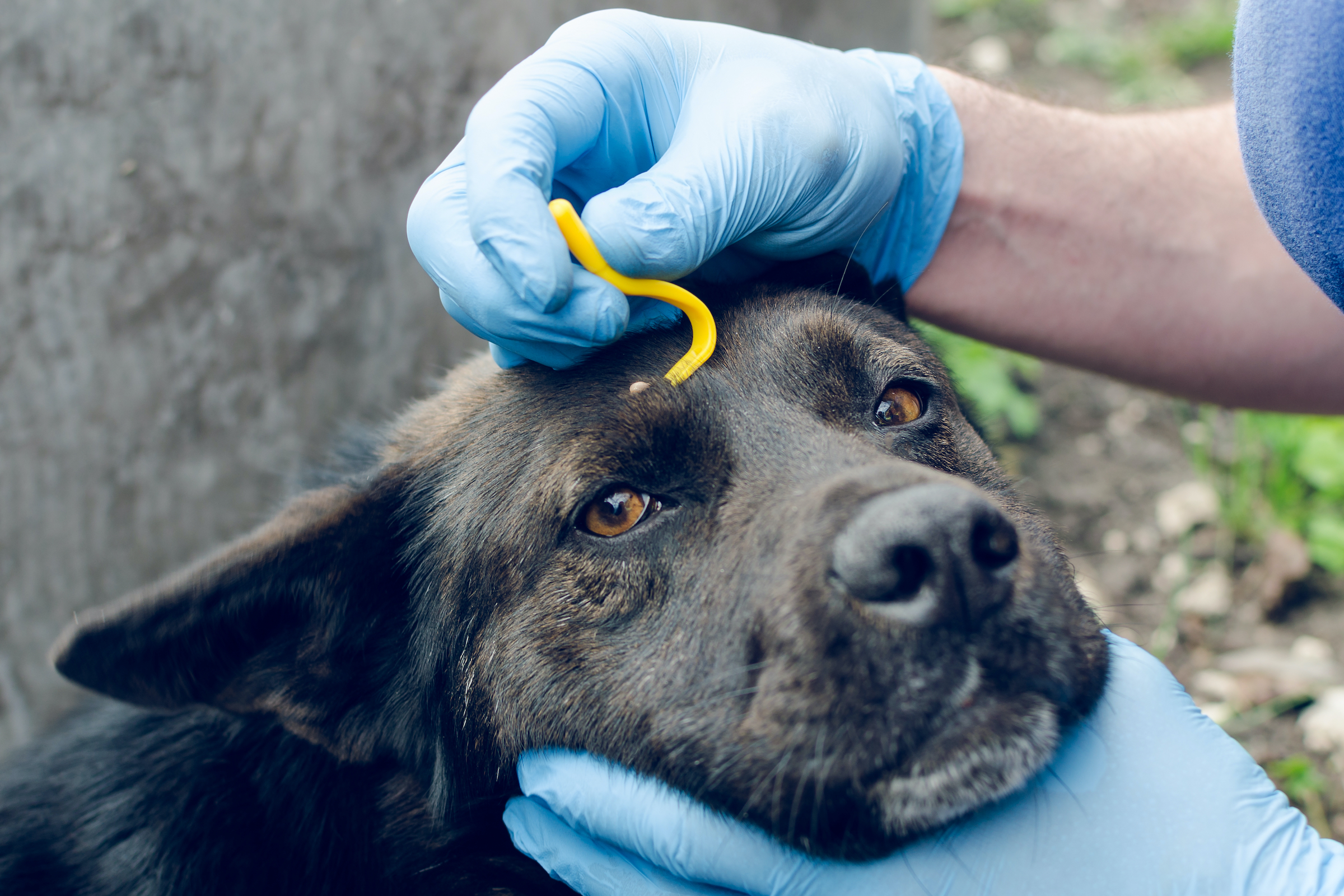There are several things you don’t want to find on your dog, and ticks always make the list. Nearly every dog owner has had a close call with a tick, whether on their pet or themselves, and probably had to grit their way through a fast removal of these bloodsucking critters. Whether you’re concerned about the health of your pet or just queasy around insects in general, there are plenty of things you can do to make tick encounters infrequent and harmless. From tick prevention in dogs to instructions for tick removal, PawTracks has you covered!
First things first: Don’t panic. If you’re really, truly worried about your pet (or you can’t handle dealing with ticks — we don’t blame you), your vet is always there to help. They can show you how to check your pup for ticks and give you their two cents on the best ongoing prevention methods.
Here are five ways to protect your dog from ticks.

Tick prevention for dogs
It’s important that the prevention method you use is veterinarian-approved, not only for effectiveness but also for the safety of your pet. While home remedies may help in a pinch, they are not going to benefit your fur baby (or you!) in the same way a professional product can. Flea and tick medications for cats should not be used on dogs unless the label says it’s meant for canines as well.
Long-term tick prevention can be worn as a collar, taken by mouth, or used as a shampoo. It’s always a good idea to ask your vet whether your buddy should be using tick prevention year-round or if there are particular seasons to prepare for.
Oral and topical tick treatments may be used monthly, weekly, or even daily, depending on the product and its purpose. If you’re treating and preventing ticks, you’ll be using a more aggressive treatment for sure. Collars are worn and replaced regularly, though not all dogs love this method.
Tick prevention for people and the home
Because most dogs pick up ticks from their humans or the environment, it’s important to keep both parasite-free. Since ticks love shadowy places, keep your lawn trimmed as often as you can and remove any brush and leaves (via CDC). Creatures like ticks love humidity, so keeping your home dehumidified can do a lot to help ward them off.
Inside the home, vacuuming will be your best friend. You can wash your pup’s toys and bed in soapy hot water to kill any remaining pests. When walking outdoors, avoid tall grasses and heavily wooded areas, if possible. Always do a full-body check when returning home, using a handheld mirror and light for the hard-to-see spots.
How to check your dog for ticks
Once you’ve made sure you’re tick-free, it’s time to inspect your pup. Be on the lookout for bumps! While you’re giving him a good rubdown, which he’s bound to love, pay special attention to these areas (via AKC):
- The feet, including between the toes
- The inner legs, front and back
- Around and in the ears
- The face and lips
- Under and around the tail
- Under the collar, harness, etc.

How to remove a tick
If you happen to find a creepy-crawler on your dog, you can probably take care of it at home. It’s crucial to act fast, as a tick can transmit disease in as little as three to six hours. Wear disposable gloves if you have them and find either a pair of fine-point tweezers or a tick-removal tool. Regular, wider tweezers are ineffective and dangerous; if you squeeze the pest, more of its sticky, infectious secretions can seep out into the wound. No, thanks!
A tick attaches to its host by latching on with its mouth, holding on with its legs, and producing that infectious sticky substance. Because of this, it’s essential to grasp the tick as close to your dog’s skin as possible. Sometimes, the mouthpart of the tick — they do not have a separate head, which is a popular misconception — can separate and stay attached to the host. Proper tick removal will prevent this.
When removing a tick, pull straight upward in a slow but steady manner. If using a tick-removal tool, simply center the tick between the two prongs, grasp it, and twist upward.
Tick bite aftercare
Cleaning the wound, the tools, and your hands is superimportant, especially since tick secretions can carry infectious diseases. Rubbing alcohol is a readily available disinfectant, though washing your hands should never be skipped. Keep an eye out for any changes in your dog, either on the skin near the wound or in your pup’s behavior. If you’re concerned about how long the tick may have been on your dog, it never hurts to give your vet a call.
Ticks can look scary, especially if you’ve never dealt with one before, but most encounters end happily. It helps to be prepared with the tools and knowledge of tick removal, and keeping up with your regular tick prevention will go a long way as well. Consider your location, your dog’s tendencies, and — of course — your vet’s advice when choosing the best products for your pup, and you’ll be all set for your next outdoor romp.



